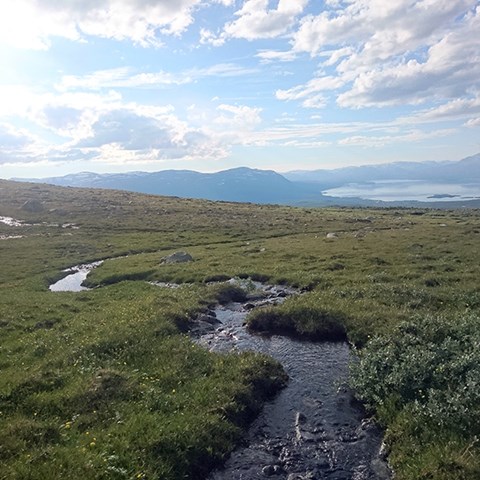“We expected to find the highest emissions at the tropics, where it is warm, because the biological production of methane is highly sensitive to temperature,” says Gerard Rocher Ros, SLU. “Instead, we found that emissions are also elevated in boreal and tundra biomes, despite low temperatures, likely because northern streams and rivers are often connected to peatlands and wetlands that are powerful methane sources.”
Because streams and rivers are highly dynamic ecosystems, predicting their methane emissions at global scales first required a massive investment into data compilation.
“Prior to this study, we spent a few years compiling all observations of methane in rivers that we could find and placing these in a public database. By applying machine learning tools to these many thousands of observations across the globe we could finally model methane emissions from rivers at large spatial scales” says Gerard Rocher Ros.
This effort showed that, collectively, the emission of methane from Earth’s streams and rivers is indeed an important flux to atmosphere, similar to rates documented for lakes. The global pattern also revealed that high rates of riverine emissions are often associated with landscape properties that promote methane production through enhanced organic matter supply and low oxygen conditions in aquatic sediments, but particularly in hydrologically-connected soils and wetlands.
Interestingly, temperature did not emerge as a particularly good predictor of riverine emissions across the globe or even within the majority of individual rivers over time. Thus, while methane emissions from lakes and wetlands are often regulated by temperature, rivers do not appear to function in the same way.
“This means that other processes can affect riverine methane emissions, such as changes in discharge or in the hydrological connections to soils and wetlands” says Ryan Sponseller, Umeå University. This is important when we project future methane emissions: while for lakes and wetlands increases in temperature may be the most important driver, for rivers, it may be more important to understand how environmental changes increase or decrease methane inputs from the surrounding landscape, but this remains uncertain.
As methane production is very dependent on organic matter and low oxygen, the authors also leveraged this new database to explore how humans may directly affect river methane emissions. They find that environments highly modified by humans – such as ditched streams, canals, rivers below wastewater treatment plants – also tend to have elevated emissions.
“Humans are actively modifying river networks worldwide, and in general these changes seem to favour methane emissions. One implication of this finding is that a side effect of stream or watershed restoration efforts could be a reduction in methane emissions from running waters” says Ryan Sponseller.
Finally, as the researchers could produce monthly global maps of methane emissions from rivers, this data product is also useful to better understand the global methane cycle, and is currently being incorporated in the latest version of the global methane budget.
“This is important because understanding the magnitude and spatial patterns of all sources of methane to the atmosphere can really help improve Earth System Models. Those are large scale models used to predict the future state of climate, which we need to prepare society”, says Gerard Rocher-Ros.
For more information, please contact:
Gerard Rocher-Ros, postdoctor at the Department of Forest Ecology and Management and Department of Forest Ecology and Management, Swedish University of Agricultural Sciences
Phone: +46 733 69 77 16
Email: gerard.rocher.ros@slu.se
Ryan Sponseller, associate professor, Department of Ecology and Environmental Science, Umeå University
Phone: +46 90 786 65 50
Email: ryan.sponseller@umu.se
